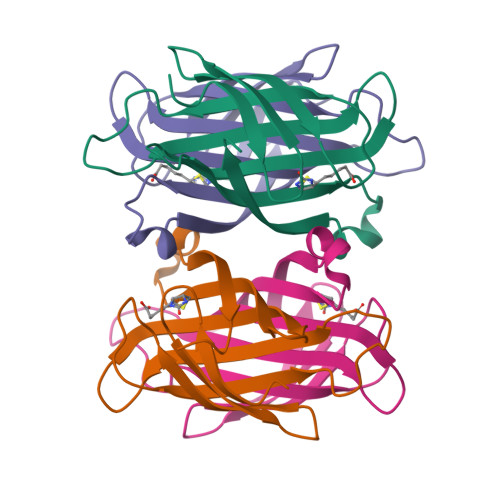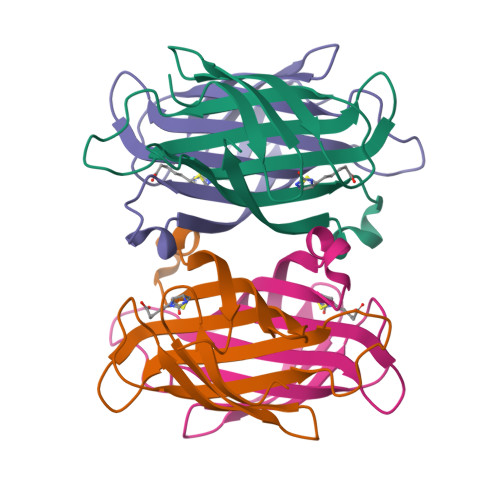Making routine native SAD a reality: lessons from beamline X06DA at the Swiss Light Source.
Basu, S., Finke, A., Vera, L., Wang, M., Olieric, V.(2019) Acta Crystallogr D Struct Biol 75: 262-271
- PubMed: 30950397
- DOI: https://doi.org/10.1107/S2059798319003103
- Primary Citation of Related Structures:
6M9B - PubMed Abstract:
Native single-wavelength anomalous dispersion (SAD) is the most attractive de novo phasing method in macromolecular crystallography, as it directly utilizes intrinsic anomalous scattering from native crystals. However, the success of such an experiment depends on accurate measurements of the reflection intensities and therefore on careful data-collection protocols. Here, the low-dose, multiple-orientation data-collection protocol for native SAD phasing developed at beamline X06DA (PXIII) at the Swiss Light Source is reviewed, and its usage over the last four years on conventional crystals (>50 µm) is reported. Being experimentally very simple and fast, this method has gained popularity and has delivered 45 de novo structures to date (13 of which have been published). Native SAD is currently the primary choice for experimental phasing among X06DA users. The method can address challenging cases: here, native SAD phasing performed on a streptavidin-biotin crystal with P2 1 symmetry and a low Bijvoet ratio of 0.6% is highlighted. The use of intrinsic anomalous signals as sequence markers for model building and the assignment of ions is also briefly described.
Organizational Affiliation:
Swiss Light Source, Paul Scherrer Institut, Villigen PSI, Switzerland.



















